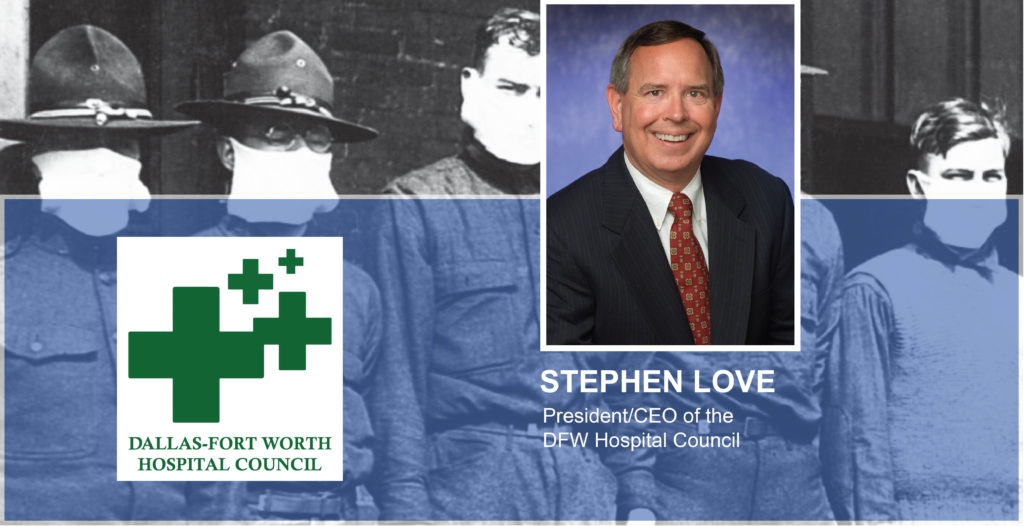
By Stephen Love, President/CEO of the DFW Hospital Council
Many historians, including John M. Barry who wrote the book “The Great Influenza,” believe in 1918 someone in Haskell County, Kansas had a mild H1N1 virus and carried it to a huge Army base. From there, it spread across the world transmitted largely by troops in close barracks on ships. The symptoms were so mild, many called it a “three-day fever.” Physicians were not even sure the disease was a form of influenza. This fever became highly lethal and killed approximately 50 million people worldwide between the spring of 1918 and early 1920. Many medical experts believe it originated in Kansas and was transferred from a pig to a human, infecting troops in World War I and then passing into the civilian population.
The second wave of this virus impacted naval ships and medical workers, with the patients developing pneumonia depriving them of oxygen to the point many victims turned blue. Numerous countries were impacted including Italy, Mexico and India. U.S. cities hit especially hard were New York, Philadelphia, New Orleans and St. Louis. The public health director in San Francisco quarantined all naval installations and implemented a system urging people to wear masks. In our current COVID-19 pandemic, San Francisco’s mayor was the first to order a citywide lockdown.
There was even a third wave of this epidemic in 1919, killing over 11,000 people in New York City and Chicago. Some cities such as Savannah, Georgia were forced to re-close public gathering places due to virus’s resurgence. Previously, those public places had reopened in the belief the virus was contained. This terrible worldwide crisis lasted almost two years and ultimately had three waves of resurgence.
As we learn from history, there are many similarities between the 1918 H1N1 virus and our COVID-19 pandemic. There is another timeless characteristic when comparing the two diseases – victims relied on the tireless efforts of medical professionals who treated them while risking their own lives. In addition, since this virus emerged during World War I, many physicians and nurses were working overseas. Medical professionals at home were stretched dangerously thin but still performed as healthcare heroes.
We are facing a huge challenge with COVID-19. We are thankful for our first responders, healthcare workers and the men and women providing essential services such as groceries and transportation. As in 1918, U.S. citizens have displayed remarkable resilience when helping the community. Thank you for your service.
DFWHC Blog – COVID-19, as we learn from history
05/14/2020